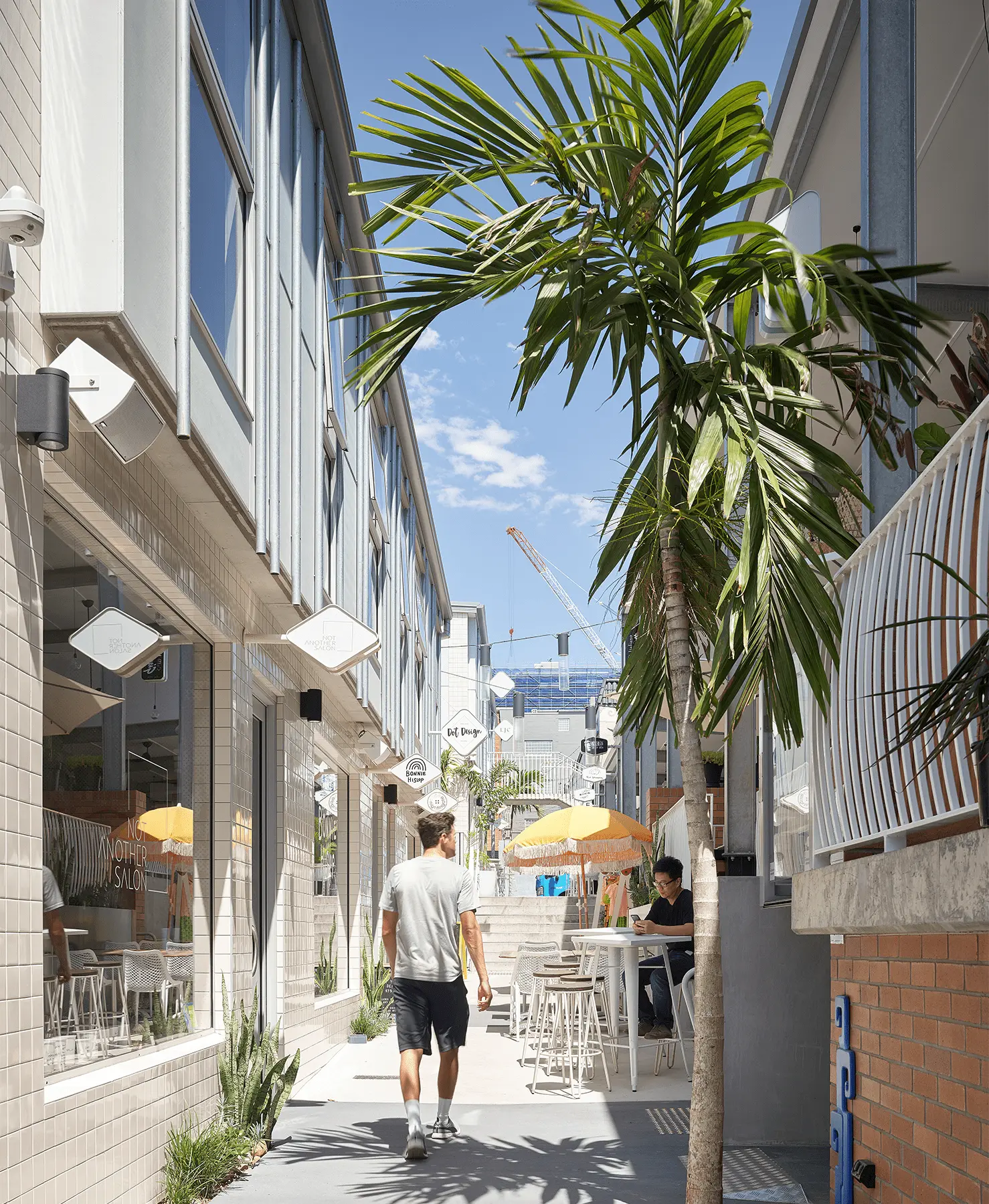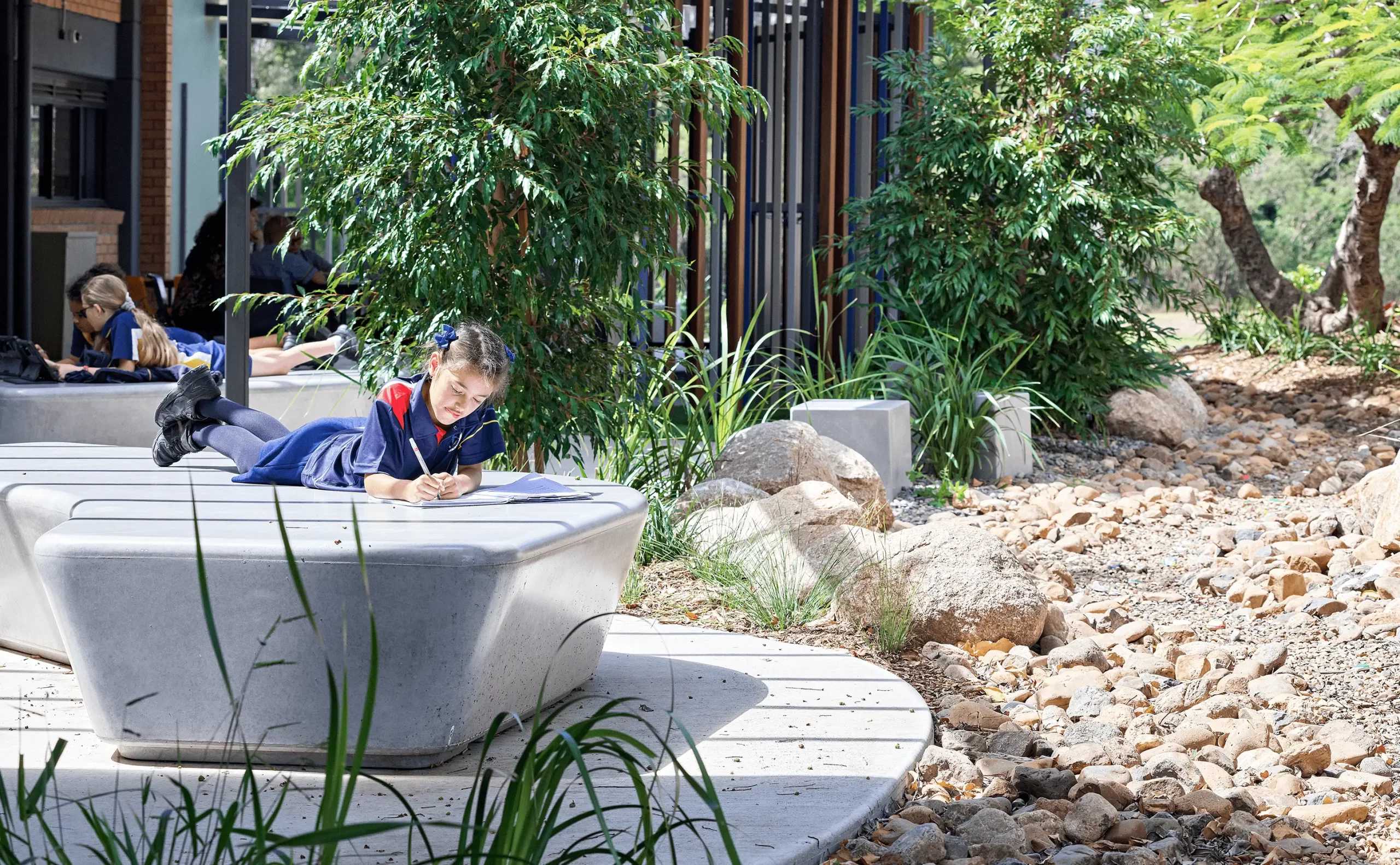Designing Greener, Better, and more therapeutic built environments
Our environment has a profound effect on us. It can impact everything from our level of concentration, stress levels and productivity to our physical health and emotional wellbeing. Yet despite this, many environments aren't designed in a way that positively impacts our lives – but we’re committed to changing this.
With an integrated design approach that combines architecture, interiors and landscape architecture, we design greener, better, and more therapeutic built environments to create greater wellbeing by design. We do this through several ways, including placemaking, connection to nature, environmentally sustainable design, co-design, and rehabilitative design.
CREATING A STRONG SENSE OF PLACE
A project takes on new life when placemaking and storytelling combine into physical form. Placemaking is the process of using thoughtful design to create a sense of identity and belonging to a particular location or community. When people feel a sense of ownership and connectivity to their surroundings, they’re more likely to take care of it and actively use it.
The benefits of placemaking go beyond the look of a project. It’s what creates lasting shift in perspective and behaviour. Placemaking is what increases social interaction, fosters community pride, encourages physical activity, and creates a vibrant hub of activity within the local neighbourhood.
Our team are highly experienced at placemaking, theming and storytelling and look for opportunities to work with clients and local governments to create awe-inspiring, educational, and fun experiences through utilising innovative materials and relevant theming to create a strong sense of place in our community projects.

Creating Greener Built and natural environments
Knowing the health and rehabilitative benefits of nature we proactively link the natural and built environments through utilising Biophilic Design principles. Biophilic design is used to increase connectivity to the natural environment using direct and indirect nature for improved occupant rehabilitation and wellbeing.
From lightwells and green walls to framing views to nature and designing productive outdoor environments, we create a wide range of spaces that have layered meaning in connecting to nature
You can read more about the importance of connecting to nature and our approach to integrating the natural environment into our projects under landscape architecture.
CREATING POSITIVE ENVIRONMENTS WITH A POSITIVE ENVIRONMENTAL IMPACT
With a passion for sustainability and healthy buildings, we optimise the contextual site analysis and design for flexibility, evolution, and design for adaptability in this rapidly changing world we now live in.
While we select materials for their timelessness, brand identity and positive sensory impact, we are also mindful to opt for durable alternatives with low emissions and low embodied energy, as well as recycled and reusable items where possible.
You can read more about our commitment to the environment under
sustainability and our approach to healthy
interiors and architecture.

A proven co-design approach that ensures the best design outcomes
Understanding the importance of treating stakeholders as equal collaborators in the design process to create more socially impactful outcomes, we take a participatory approach to designing projects that incorporates the Traditional Owners of the land and those with Lived Experience to establish a true co-design experience.
Our proven co-design framework has been used successfully on multiple projects including the landmark $516 million Thomas Embling Hospital Upgrade.
You can read more about how we design for County under cultural responsibility.
NORMALISING INSTITUTIONAL ENVIRONMENTS FOR AN EASIER TRANSITION
As correctional and mental health designers we have a heavy responsibility and a significant opportunity to create real and lasting change in the community we serve by designing secure facilities that deinstitutionalise and normalise the prison experience to make the transition out of the prison system is easier.
When you consider that every prisoner released will be interacting with society, it’s important to ask through the design, ‘What do we want those individuals to be like when they are back into the community, and what is the optimum environment to create the best citizens?’
Combine this train of thought with a growing body of research showing that working in a correctional centre not only decreases mental health, but it also increases staff suicide rates, heart disease, blood pressure and family breakdown, and you can see why
harsh prison environments aren’t the answer.
A calm physical environment is more likely to be a safe and secure environment. Staff and visiting family members (another key element in rehabilitation) need to be considered through the design.
It's why we implement several methods to decrease stress levels and subconscious anxiety through our designs. Increased access to daylight and external spaces, connection to nature, minimising unnecessary auditory pollution, clever planning solutions and increased passive surveillance are all ways we improve physical and mental health to decrease user anxiety and increase security.
Yvonne Jewkes, Professor of Criminology at the University of Kent’s School of Social Policy, Sociology and Social Research, who has worked with GB-A on several correctional projects, had this to say about GB-A’s rehabilitative approach:
“Kavan is unusual, in my experience of prison architects, at least, in that his designs are underpinned by clinical and social scientific research evidence. Designing prisons to rehabilitate offenders is not easy, because of the systemic, structural, and social disadvantages that most prisoners come from, and return to, on release from custody. GB-A understands this, but also believes that prison design can make a profound difference to rehabilitative outcomes.
In part, it is about making practical decisions concerning where to situate key workers like prison officers, psychologists, and teachers in relation to prisoners, how many workshops and classrooms are required, how prisoner movement can be facilitated to allow a degree of autonomy and choice, and so on. But these things are also about treating prisoners with decency, dignity, and respect to help them on their rehabilitative journey.”
You can read more about how we are helping to break cycles around corrections under
corporate responsibility.
Creating rehabilitative environments with measurable results
As Australia’s leading correctional architects, we work within a sector that has greater demands and expectations from their health and medical facilities with prisoners having significantly higher rates of mental health problems, psychotic disorders, chronic and infectious diseases and alcohol abuse and illicit drug use than the general population.
According to the Victorian Ombudsman 40% of all Victorian prisoners have been identified as having a mental health condition and prisoners are 10-15 times more likely to have a psychotic disorder than someone in the general community*. Prisoners are also often the victims of a violent upbringing, trauma, and fetal alcohol syndrome.
To have a positive impact in this sector design must support operations to educate and rehabilitate. That is what we specialise in – and what’s more, it’s working.
“The Southern Remand Centre (SRC) has been opened since July 2022. The feedback received by the remandees has been very positive, the open spaces, generous cells and contemporary architecture which has had a positive influence on the remandees behaviour.
Remandees of all different cohorts will sit and eat their meal together in a pleasant, communal environment. With open spaces in the outside common areas, remandees will have BBQ together, and at times had Pickle Ball competitions with staff, which traditionally would never be heard of.
We have had remandees enter the facility who have historically been problematic, but since been housed in the Southern Remand Centre their behaviour and attitudes have been excellent, the change of environment has definitely had a positive influence. As the SRC Superintendent, remandees frequently ask whether they can serve their sentence in the SRC facility, which shows the healthy environment the SRC has created.”
- Southern Remand Centre Superintendent
*Source: Victorian Ombudsman Investigation into the rehabilitation and reintegration of prisoners in Victoria 2015.






























